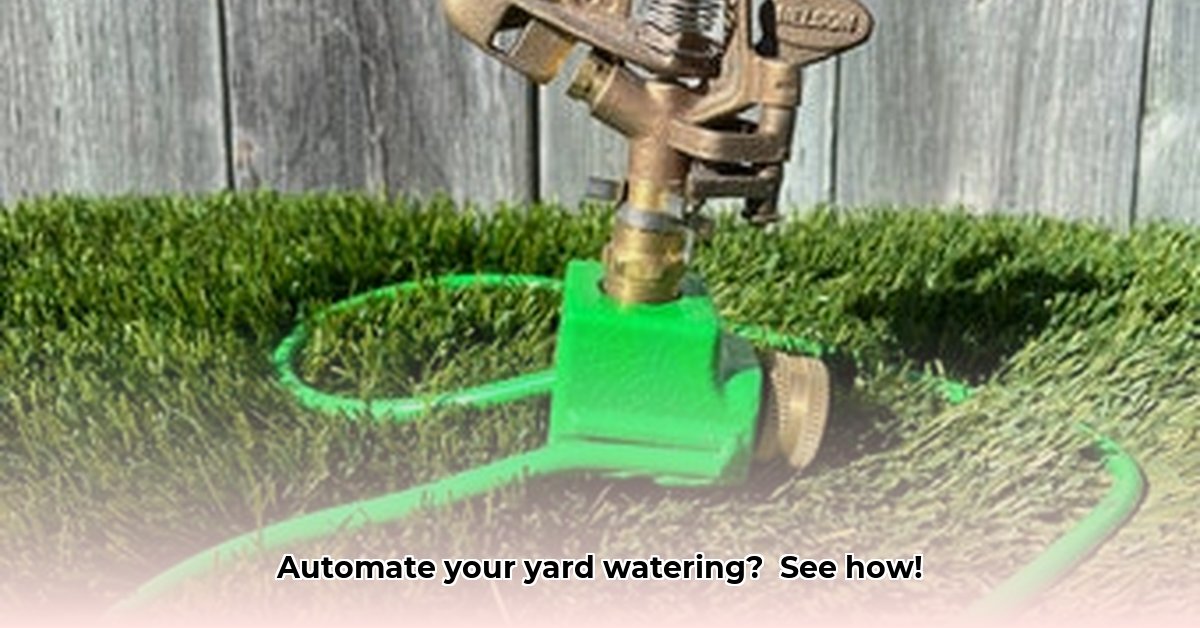
Hose Tractor Sprinklers: A Comprehensive Guide to Automated Irrigation
Forget the back-breaking chore of dragging hoses and manually watering your lawn! Hose tractor sprinklers, also known as traveling sprinklers, offer a convenient and efficient solution for automated irrigation. These self-propelled devices move along your hose, evenly distributing water across your yard or field. This guide provides a comprehensive overview of hose tractor sprinklers, covering selection, installation, maintenance, and troubleshooting to help you choose and utilize the perfect system for your needs. For larger areas, consider a tractor-powered option.
How Hose Tractor Sprinklers Work: The Mechanics of Automated Watering
Hose tractor sprinklers utilize water pressure as their power source. The water flowing through the hose drives an internal gear system, converting water pressure into rotational motion. This rotation propels the sprinkler along the hose, while simultaneously rotating sprinkler heads ensure even water distribution. Isn't that clever? This simple yet effective mechanism eliminates the need for manual labor and ensures consistent hydration of your landscape.
Selecting the Right Sprinkler: Matching Your Needs to the Right Model
Choosing the appropriate hose tractor sprinkler depends on several key factors:
Yard Size: Larger areas require sprinklers with longer hoses and wider coverage. A small backyard will have different needs than a sprawling farm. How much area do you need to cover?
Water Pressure: Insufficient water pressure can hinder the sprinkler's movement. Check your water pressure (using a gauge) to ensure compatibility with your chosen model. Low pressure might necessitate a booster pump.
Budget: Hose tractor sprinklers vary significantly in price. Determine your budget before comparing different models to find the right balance of features and cost.
Features: Consider features like adjustable spray patterns for precise watering control, automatic shutoff to prevent overwatering and conserve water, and durable construction for extended lifespan and reliability. Timers are also a convenient option for automated scheduling.
Here’s a sample comparison table (Note: Actual model specifications and prices should be verified):
| Model | Hose Length (ft) | Water Pressure (PSI) | Spray Pattern | Price Range ($) | Key Features |
|---|---|---|---|---|---|
| Orbit 57300 | 100 | 30-50 | Adjustable | 100-150 | Lightweight, easy setup, reliable |
| Gilmour 540 | 150 | 25-45 | Adjustable | 150-200 | Durable construction, wide coverage area |
| Example Model 3 | 250 | 40-60 | Adjustable, Pulsing | 250-350 | Heavy-duty, long hose, multiple spray modes |
Setting Up Your Hose Tractor Sprinkler: A Step-by-Step Guide
Setting up your hose tractor sprinkler is typically a straightforward process:
Hose Preparation: Unroll the hose smoothly along the desired path, avoiding kinks or sharp bends. This ensures proper sprinkler movement.
Secure Connections: Connect the sprinkler to the hose end, creating a watertight seal. Double-check to prevent leaks.
Adjust Settings: Adjust the spray pattern and water flow rate according to your lawn's specific needs. Most models offer customizable settings for optimal performance.
Water Activation: Slowly turn on the water and observe the sprinkler’s operation. Make any necessary corrections to achieve even water distribution.
Operation and Maintenance: Ensuring Long-Term Performance
Regular maintenance is crucial for optimal performance and longevity:
Gear System Inspection: Regularly check the gear system for wear and tear. Clean any accumulated debris.
Hose Inspection: Inspect the hose for leaks, cracks, or damage. Repair or replace damaged sections promptly.
Sprinkler Head Cleaning: Keep sprinkler heads clear of debris to maintain even water flow and prevent clogging.
Troubleshooting Common Issues:
Sprinkler Not Moving: Check for insufficient water pressure, kinks in the hose, or obstructions.
Uneven Watering: Adjust the spray pattern, water flow, or hose positioning to improve water distribution.
Advanced Considerations: Optimizing Your Irrigation System
For more advanced users, consider these enhancements:
Smart Irrigation Controllers: Integrate your hose tractor sprinkler with a smart controller for automated scheduling based on weather conditions and soil moisture levels.
Uneven Terrain Management: Adapt your hose layout to account for slopes or uneven terrain to ensure even watering across your entire area.
Water Usage Optimization: Employ strategies like using water-wise plants, adjusting watering schedules based on weather, and examining soil moisture levels to minimize water waste.
Conclusion: Effortless Watering for a Healthier Lawn
Hose tractor sprinklers provide a convenient and efficient solution for automated lawn and garden watering. By following the guidance provided in this guide, you can choose the right model for your needs, install and maintain it effectively, and enjoy years of effortless, efficient irrigation. This will lead to a healthier, more vibrant landscape.